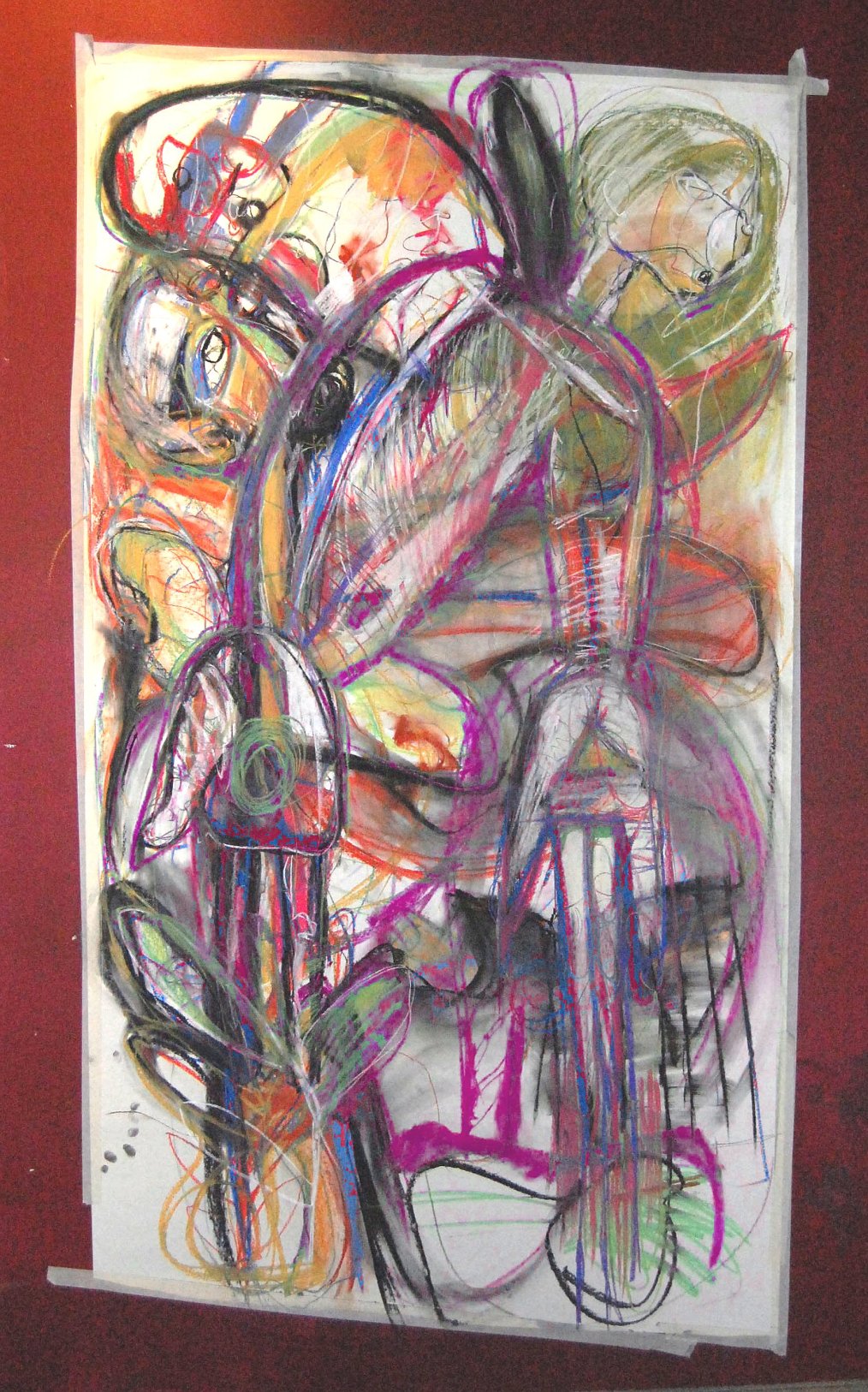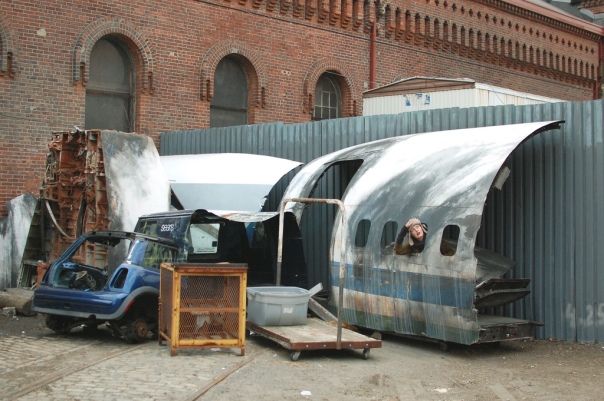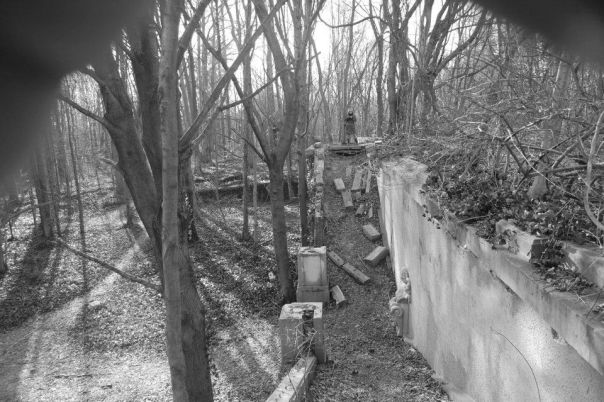Monthly Archives: January 2012
Deep in the Yucatán – Valladolid, Mexico
There is a gentle magic on the hazy roads leading to Valladolid – For miles you travel through nothing but the flat, interminable expanse of the Yucatán jungle. The monotony, coupled with the heavy air, and brilliant clear sun, becomes hypnotizing. Wondrously amplified details begin to emerge from the feverish trance – small yellow butterflies float out of the trees, and huts of villages glance out from here and there, their presence revealed sometimes only by the smoke of cooking fires. Occasionally, in the middle of nowhere, a lone traveler stunningly appears on the side of the road, pushing a cart or riding a bicycle… going to who-knows-where.
Arriving in Valladolid abruptly snaps one back into reality. The narrow, brightly colored streets are a flurry of activity -stores specializing in leather and clothing; -food vendors selling strange fruits, medicines, and streetfood; -bicycles, cars, traffic cops swarming everywhere. The sun sears even more than it did out in the jungle. Once in while, you see women, often in pairs, wearing striking Mayan huipiles – dazzling white blouses decorated with intricate embroidery. An elderly woman or two sit in doorsteps, sewing. The Spanish here is accented by Mayan, and occasionally you hear pure Yucatec Mayan being spoken, as it is still the first language of many.
The ancient Maya had a town here called “Zací”, which was destroyed by the Spanish under a nephew of the conquistador Montejo (now the namesake of a local beer) family. They had established a town further away, but plagued by mosquitos, they arrived here and established Valladolid on March 24, 1545. The Mayans of the region, of course, did not take kindly to this invasion and, and in the face of horrific horrific exploitation, staged numerous revolts over the following centuries, culminating in the Caste Wars of the 1840’s, in which the town was sacked and many of the residents slaughtered. In other parts of Mexico, the tensions and fallout stemming from the Spanish colonial system still run very high, but here there seems to be some peace at the moment.
It’s a small town, and you seem to run into the same people over and over again. Due its proximity to some major archeological sites, it has begun to see more tourism over the past ten years- predominantly backpacker types- We twice bumped into some Germans who were traveling through the Yucatán and Central America. And as far as we could tell, we were the only Americans in town.
It’s a compact place centered around the zócalo, near which are a number of modest hotels and a handful of exceptional restaurants.

near the Zócalo - just before an evening storm knocked out the town's electricity for about an hour or so
The food of the Yucatán is unique. To name a few dishes: pollo escabeche (chicken with a huge pepper and pickled onions in a vinegary sauce), cochinita pibil (pork rubbed with a red adobo, wrapped in leaves, and slow-cooked in an underground oven), Longanizas Valladolid (Valladolid style sausage, loaded with spices), sopa de lima (a chicken soup with lime, poc chuc (a sort of barbecue grilled pork), and the ever-present fresh tortillas.

These giant sinkholes, known as cenotes, dot the limestone landscape of the Yucatán. Some, like at Chichen Itza, are open wells; some are completely subterranean; and many, like this one, are sort of in between. Because the Yucatán lacks river systems, human settlements tended to gravitate to cenotes. Zací sustained the Mayan town that was here before the Spanish, and probably sustained the Spanish as well, early on. Today they make for great swimming holes.
Valladolid is near a number of archeological sites, including Chichen Itza and Uxmal. If you don’t have a car, there are “colectivo” vans that you can grab for very cheap. They may be hard to find, but if you ask a police officer, he or she can point you in the right direction – knowledge of basic Spanish is very helpful. The ride to Chichen Itza takes about 50 minutes and winds through the blank jungle, passing through smoky villages where little kids sell juice and trinkets by the roadside. Along the way, passengers come and go – We had a fun time with a party of Jehovah’s Witnesses for a number of miles.
More photos here: http://www.flickr.com/photos/mattron/sets/72157624680849972/with/4875923782/
Colorform in Shakefist Magazine
This past Friday, Colorform, a band I play cello in, performed at the Greenpoint Gallery in Brooklyn. It’s a great space – a two-story warehouse in the industrial fringes of Greenpoint – A ton of rooms to explore, great exhibits, friendly people, a great vibe, and 10 local bands on two stages.
A great time. The gallery does these parties at least once a month, and they are definitely worth checking out. We’ll be back to perform on April 20.
Shakefist Magazine was at the event and had this to say about Colorform:
“All this was set amongst a backdrop of about 10 local musical acts who suited the event well. The stand out was Colorform, a simple act featuring a female singer with band including an excellent cellist, who sang catchy songs whilst a friend of their’s created a piece from scratch in front of the stage using pastels. A creative and inventive idea that suited the event to a tee.”
For music, and live art, (and to find out about future events and recordings) check out:
http://www.facebook.com/colorformmusic
http://www.myspace.com/colorformmusic
http://www.myspace.com/user/colorformmusic
Brooklyn Navy Yard
The Brooklyn Navy Yard dates to 1801, but the site was used for ship building since before the Revolution. Many a famous ship was born from the dry-docks here.
During World War II, when tens of thousands worked here around the clock, the Yard
was one of the mightiest forges of American naval power.
Its strategic importance was such that, in order to prevent covert surveillance from above, the sides of the Manhattan and Williamsburg Bridges were shrouded, – and the proposed Brooklyn-Battery Bridge was turned into a Tunnel.
Today it’s a vast industrial semi-wasteland- a desolate complex dotted with rusting warehouses and random junk …
King Zog’s Gold Coast Palace
Through the 1920’s and ’30’s, Ahmet Muhtar Zoggolli, a.k.a. Zog I, was prime minister of, president of, and finally, King of Albania. Among other eccentricities, he holds the world record for number of cigarettes smoked in one day (225!), and is said to have survived 55 assassination attempts- in one case, he personally engaged in a gun fight with an attacker.
“Oh God, it was so short” he uttered when he was exiled by invading Italian armies in 1939.
He and his family wandered Britain and Egypt, and in 1951 purchased the early-20th century Knollwood Estate in the Gold Coast of Long Island, New York.
He planned to bring his entire court to the U.S., but immigration laws impeded this. The entire American endeavor was a sad failure.
Zog eventually died in Paris ten years later. His Queen Geraldine passed in 2002.
It has been suggested that King Zog bought the Estate with diamonds and rubies, and that hidden treasure lay on or under the grounds.
After being ditched in the late ’50’s, it was torn down to prevent looting. So complete was the annihilation that only a few specks remain of the 60-room palatial mansion. The only remains are the front gate, a couple of gazebos, the base of a loggia, some garden walls… The most prominent survivor is the double staircase that led to what was once the front patio.
The silence here is striking and strange. Subtle traces of stonework emerge from the brambles, and you begin to notice features of the overgrowth that reveal landscaped patterns- well-aligned rows of large trees and such.
Ghosts abound. Echoes of all those who passed through what is now a sad patch of forest. Cigars smoked, gatherings had, all manner of passions and frustrations. Holidays, births, deaths, visits- all the trappings of both grand and humble living.






























